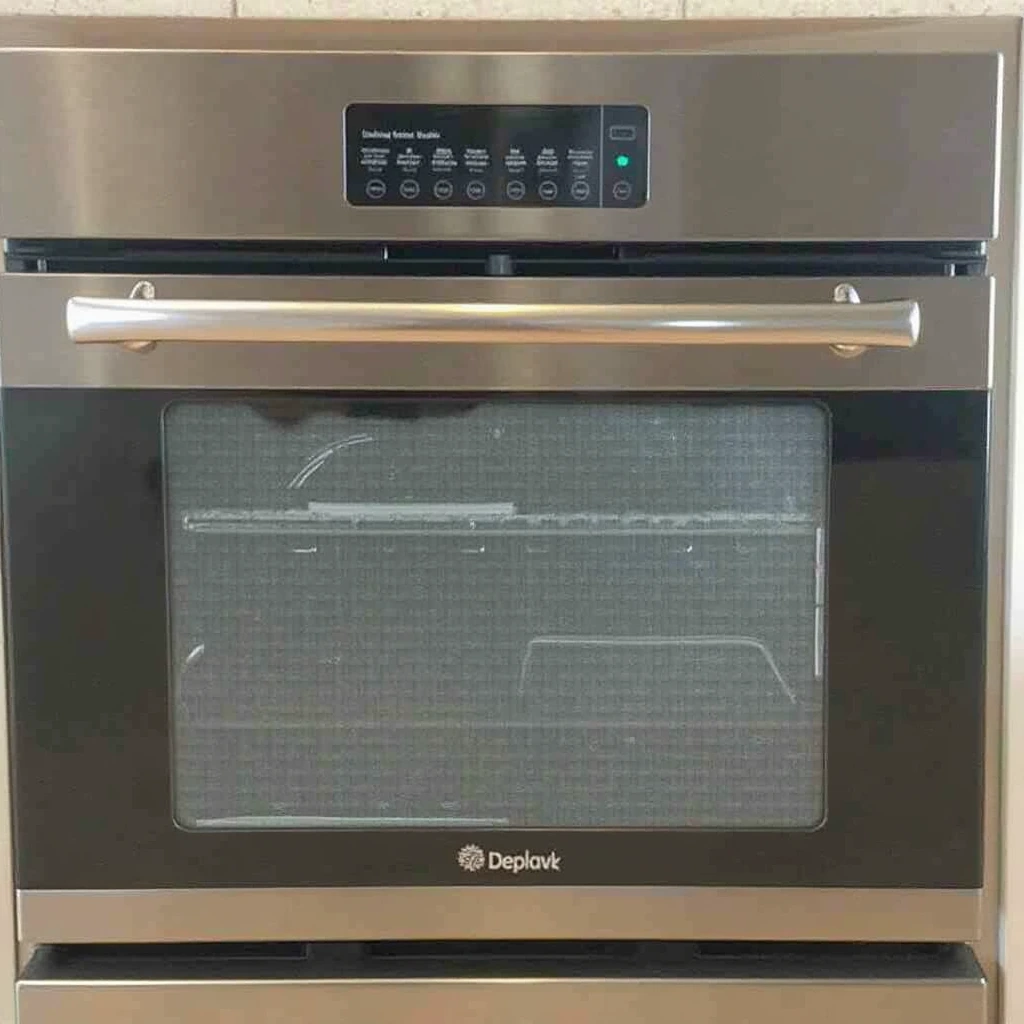Cleaning the oven is one of the most dreaded household tasks. Despite being an essential kitchen appliance, its upkeep can feel overwhelming due to baked-on grease, food spills, and grime that accumulate over time. While many ovens come with a self-cleaning function, it often doesn’t provide the deep cleaning needed for a truly spotless interior. Fortunately, there’s an effective, low-effort way to clean the entire oven—including the window—using a simple overnight method. This approach helps loosen stubborn grime, making scrubbing much easier and reducing the amount of physical effort required.
Why Regular Oven Cleaning is Essential
Keeping the oven clean is not just about aesthetics. A buildup of grease and food debris can lead to unpleasant odors, smoke while cooking, and even potential fire hazards. Additionally, a dirty oven can impact the taste and quality of food. Regular maintenance ensures optimal performance and extends the lifespan of the appliance.
By following a simple, hands-off method, you can achieve a deep clean without the struggle of excessive scrubbing. This technique makes use of ammonia and steam to break down the toughest stains and grime, leaving your oven looking as good as new.
The Overnight Oven Cleaning Method
This method requires minimal effort and a few readily available household items. It works by utilizing heat, steam, and ammonia to loosen tough grease and baked-on food. The result is a cleaner oven without the need for harsh chemical sprays or excessive elbow grease.
Materials Needed:
- 1 cup of ammonia
- 1 oven-safe bowl
- 1 bowl of boiling water
- Dish soap (liquid)
- Scrubbing pad or sponge
- Warm water
- A pair of rubber gloves
- A clean cloth or paper towels
Step-By-Step Cleaning Instructions:
1. Preheat the Oven
Begin by setting the oven to a low temperature—around 150 degrees Fahrenheit (or the lowest possible setting). This warms up the oven just enough to help loosen baked-on grime without making it too hot to work with later. While the oven is heating, boil a few cups of water.
2. Prepare the Cleaning Solution
Once the oven has reached the desired temperature, turn it off. Place a heat-safe bowl with one cup of ammonia on the top oven rack. On the lower rack, place a separate bowl filled with the boiling water.
3. Let the Steam and Ammonia Work Overnight
Close the oven door and leave the bowls inside overnight. The combination of ammonia fumes and steam will break down grease and stubborn stains, making them much easier to clean the next day.
4. Remove the Bowls and Air Out the Oven
The next morning, carefully open the oven door to let it air out for about 15 minutes. Remove both bowls—keeping the ammonia for later use—and take out the oven racks. Be cautious when handling the ammonia, as its fumes can be strong.
5. Mix the Cleaning Solution
Add a few teaspoons of liquid dish soap to the reserved ammonia, then mix in four cups of warm water. This creates an effective cleaning solution that will help remove any remaining grime.
6. Scrub the Oven Interior
Wearing rubber gloves, dip a scrubbing pad or sponge into the cleaning solution and start wiping down the sides, bottom, and interior surfaces of the oven. The grime should come off with minimal scrubbing due to the overnight treatment.
7. Wipe Everything Clean
After scrubbing, use a damp cloth or paper towels to wipe away any remaining residue. If needed, repeat the process on any stubborn spots.
Cleaning the Oven Window
Many people overlook the oven door window, but it can accumulate grease and grime over time, reducing visibility. The same ammonia and steam method can help loosen stuck-on dirt, making the glass easier to clean.
Steps for Cleaning the Oven Window:
- After removing the bowls, dip a sponge into the ammonia solution and gently wipe the window.
- If there are stubborn spots, use a baking soda paste (mix baking soda with water) and let it sit for 15 minutes before wiping it away.
- Finish by using a damp cloth to remove any streaks and ensure a clear, streak-free shine.
Additional Tips for Keeping Your Oven Clean
- Use a Liner: Placing a non-stick oven liner or an aluminum foil sheet on the bottom of your oven can catch spills and make cleanup easier.
- Wipe Spills Immediately: If something spills over while baking, wipe it up as soon as the oven cools down to prevent buildup.
- Regular Maintenance: Try to give your oven a light cleaning every few weeks to prevent the need for deep scrubbing sessions.
- Avoid Harsh Chemicals: Stick to natural or mild cleaning solutions to keep your oven safe for cooking.
Why This Method Works So Well
The combination of ammonia and steam helps break down grease and food debris effortlessly. Ammonia is known for its grease-cutting properties, and the heat from the boiling water creates steam that loosens dirt, making it easier to wipe away. Unlike harsh chemical sprays, this method minimizes exposure to strong fumes and doesn’t require excessive scrubbing.
Safety Precautions
- Always wear rubber gloves when handling ammonia to protect your skin.
- Work in a well-ventilated area to avoid prolonged exposure to ammonia fumes.
- Never mix ammonia with bleach or other household cleaners, as it can create toxic fumes.
- Keep ammonia out of reach of children and pets.
Conclusion
Cleaning the oven no longer has to be a time-consuming, strenuous task. With this easy overnight method, you can achieve a deep clean with minimal effort. By allowing steam and ammonia to do most of the work overnight, you can simply wipe away grime the next morning, leaving your oven looking fresh and spotless. Regular upkeep will not only make future cleanings easier but also keep your appliance running efficiently and your kitchen looking pristine.

